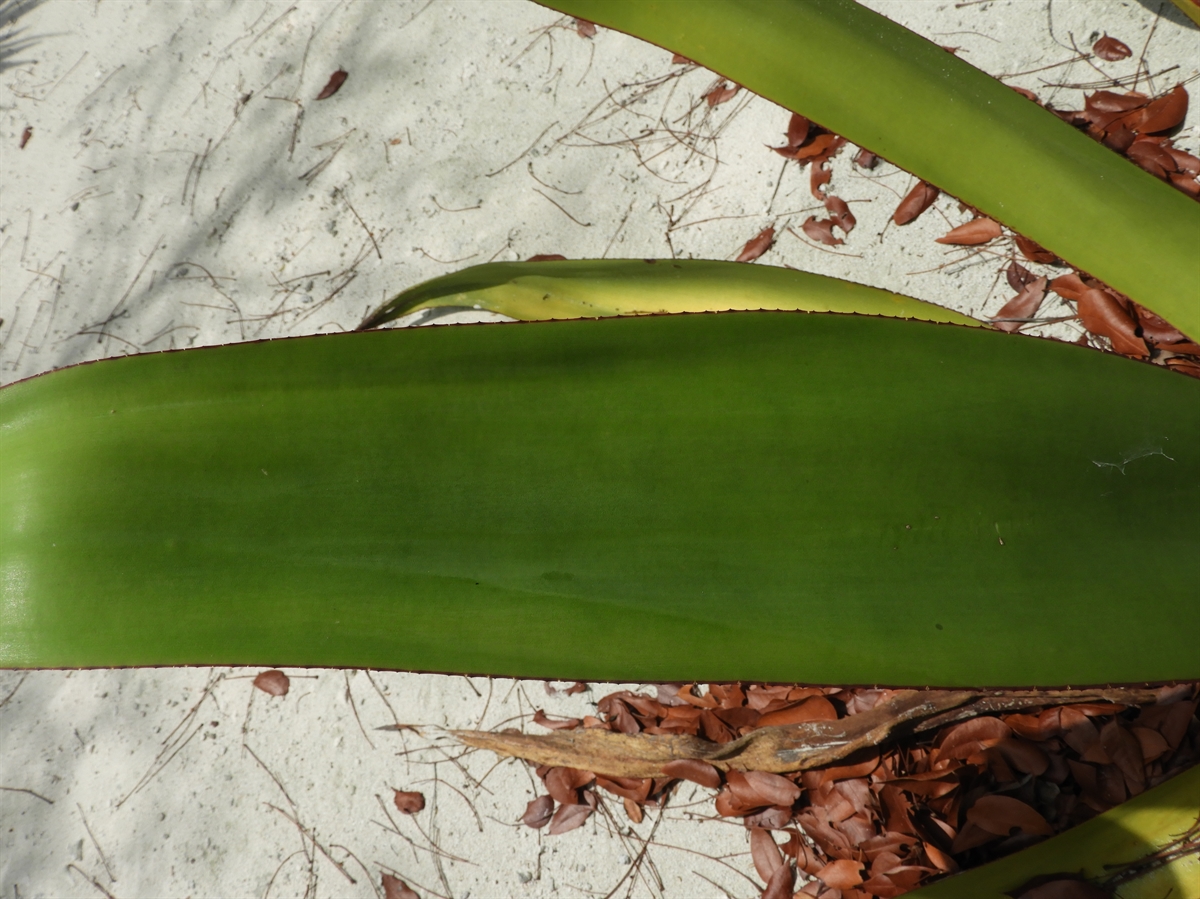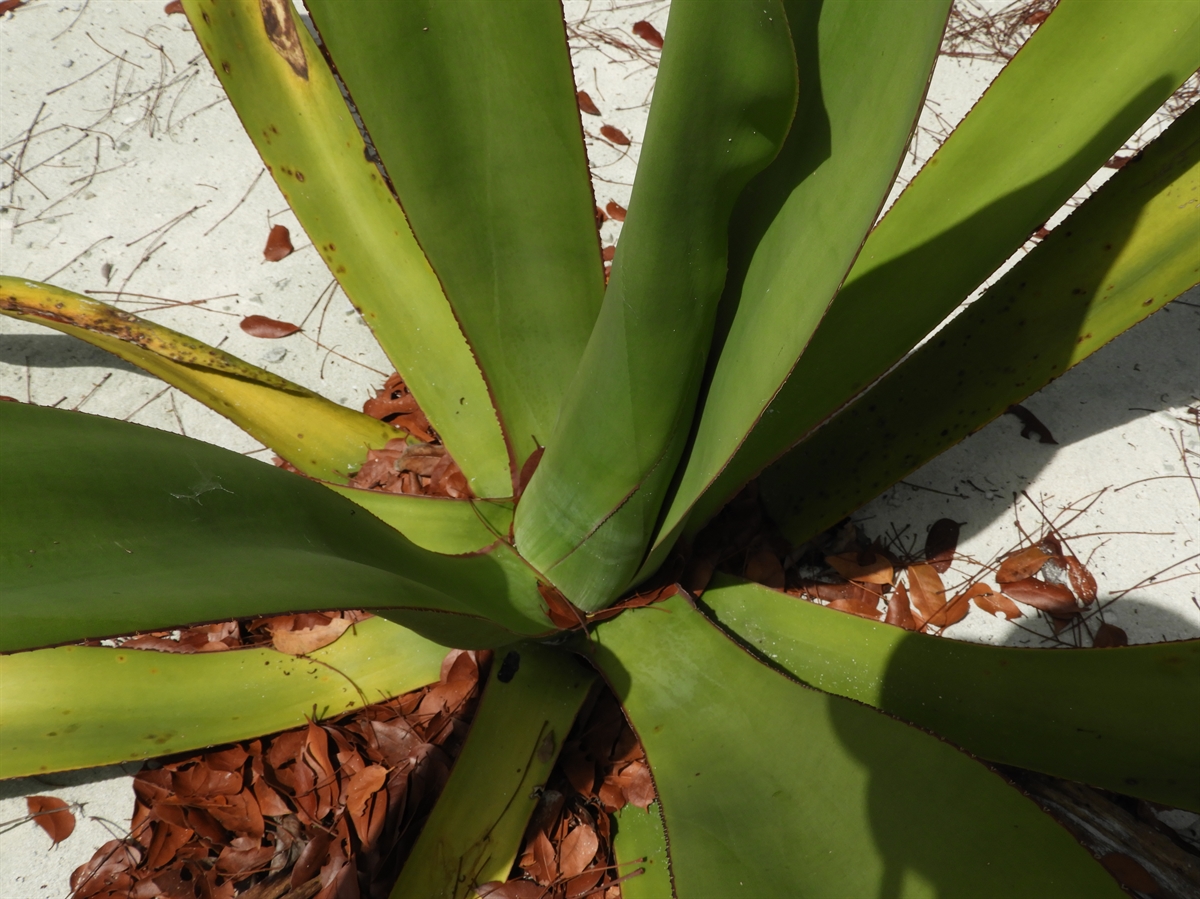Habit: Agave inaguensis grows as an acaulescent, semi succulent shrub. The leaves are arranged in a basal rosette producing new leaves from the center every year. The leaves are grayish green, up to 1 meter in length, 12 cm wide and develop an involute groove with age. The leaf apex is modified into a stout spine and the leaf margin is dark purple-black and prickled throughout.
The complete, perfect, actinomorphic flowers are arranged in a terminal panicle to 5 meters in height. The calyx has 3 unfused green sepals. The corolla has 3 yellow, unfused petals. There are 6 unfused stamens. The superior ovary has 3 locules and numerous seeds. The fruit is a light brown capsule at maturity. The plant uses the entire apical meristem during flowering and will die off after the fruits become mature.
Habitat: Agave inaguensis grows on sand substrate Dry Broadleaf Evergreen Formation – Dwarf shrublands near shorelines and on off shore cays.
Distribution: Agave inaguensis occurs in the southern island groupings of the Lucayan Archipelago and is considered endemic.
Medicinal/Cultural/Economic usage: Agave inaguensis is not used medicinally in the Bahamas.


